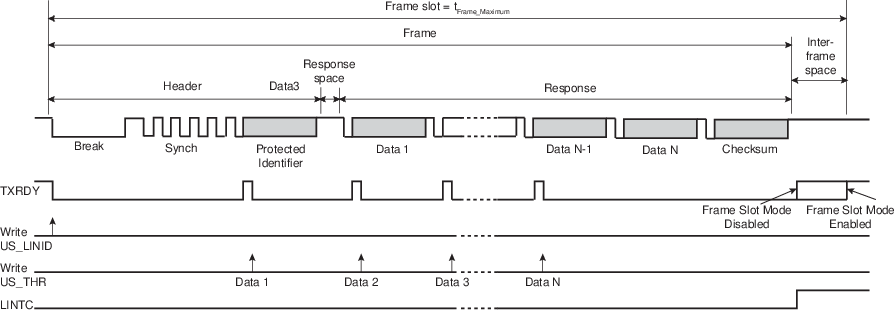This mode is useful only for master nodes. It complies with the following rule: each frame slot should be longer than or equal to tFrame_Maximum.
If the Frame Slot mode is enabled (FSDIS = 0) and a frame transfer has been completed, the TXRDY flag is set again only after tFrame_Maximum delay, from the start of frame. So the master node cannot send a new header if the frame slot duration of the previous frame is inferior to tFrame_Maximum.
If the Frame Slot mode is disabled (FSDIS = 1) and a frame transfer has been completed, the TXRDY flag is set again immediately.
The tFrame_Maximum is calculated as below:
If the Checksum is sent (CHKDIS = 0):
tHeader_Nominal = 34 × tbit
tResponse_Nominal = 10 × (NData + 1) × tbit
tFrame_Maximum = 1.4 × (tHeader_Nominal + tResponse_Nominal + 1)(1)
tFrame_Maximum = 1.4 × (34 + 10 × (DLC + 1 + 1) + 1) × tbit
tFrame_Maximum = (77 + 14 × DLC) × tbit
If the Checksum is not sent (CHKDIS = 1):
tHeader_Nominal = 34 × tbit
tResponse_Nominal = 10 × NData × tbit
tFrame_Maximum = 1.4 × (tHeader_Nominal + tResponse_Nominal + 1)(1)
tFrame_Maximum = 1.4 × (34 + 10 × (DLC + 1) + 1) × tbit
tFrame_Maximum = (63 + 14 × DLC) × tbit
Note: 1. The term “+1” leads to an integer result for tFrame_Maximum (LIN Specification 1.3).
